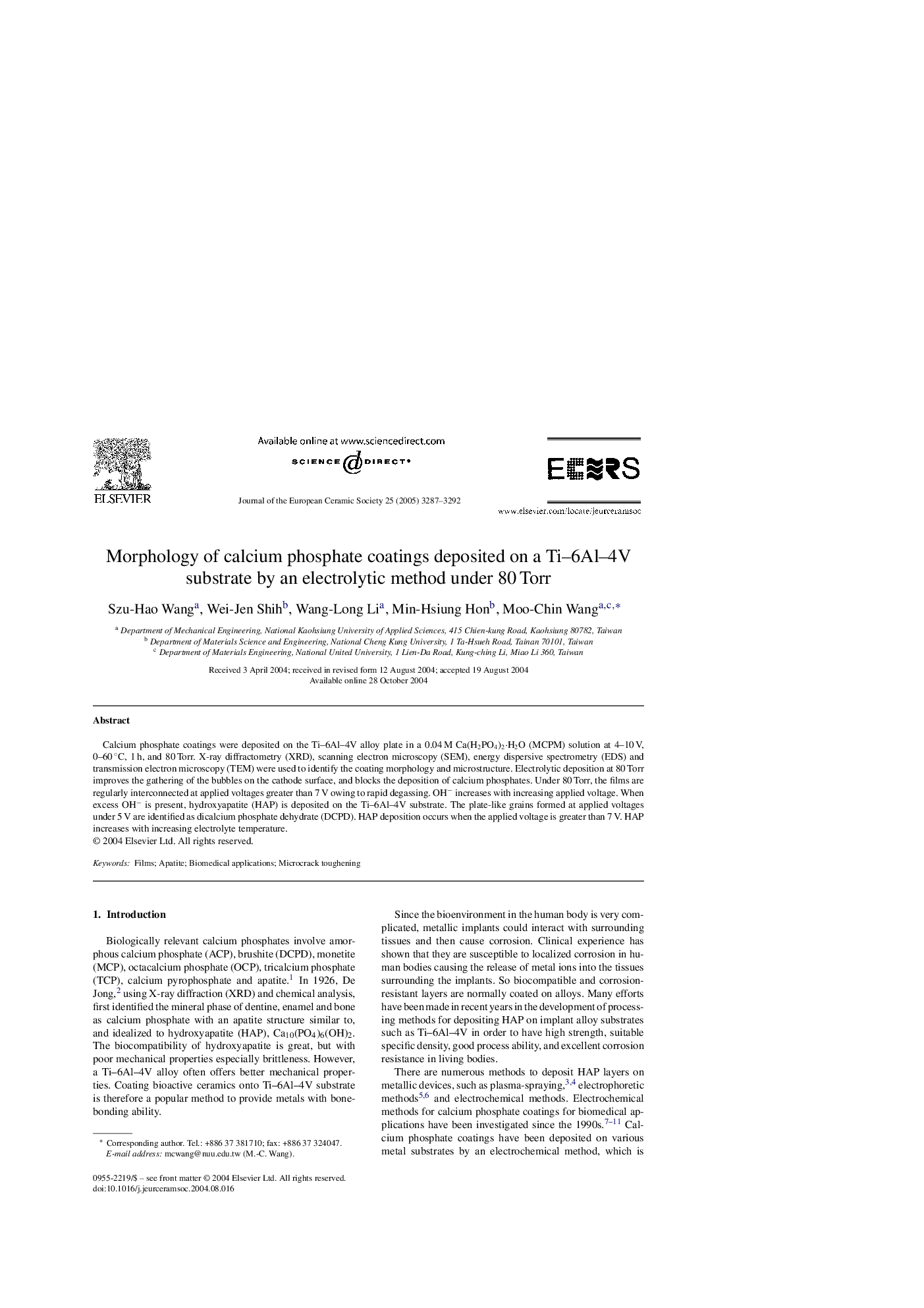| Article ID | Journal | Published Year | Pages | File Type |
|---|---|---|---|---|
| 1478278 | Journal of the European Ceramic Society | 2005 | 6 Pages |
Calcium phosphate coatings were deposited on the Ti–6Al–4V alloy plate in a 0.04 M Ca(H2PO4)2·H2O (MCPM) solution at 4–10 V, 0–60 °C, 1 h, and 80 Torr. X-ray diffractometry (XRD), scanning electron microscopy (SEM), energy dispersive spectrometry (EDS) and transmission electron microscopy (TEM) were used to identify the coating morphology and microstructure. Electrolytic deposition at 80 Torr improves the gathering of the bubbles on the cathode surface, and blocks the deposition of calcium phosphates. Under 80 Torr, the films are regularly interconnected at applied voltages greater than 7 V owing to rapid degassing. OH− increases with increasing applied voltage. When excess OH− is present, hydroxyapatite (HAP) is deposited on the Ti–6Al–4V substrate. The plate-like grains formed at applied voltages under 5 V are identified as dicalcium phosphate dehydrate (DCPD). HAP deposition occurs when the applied voltage is greater than 7 V. HAP increases with increasing electrolyte temperature.
